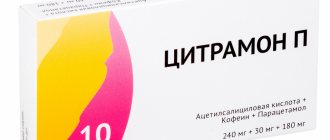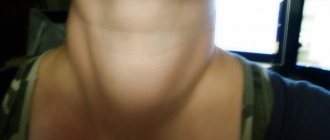Instructions for use NORFLOXACIN
Norfloxacin should not be used in patients with epilepsy or in patients with factors predisposing to seizures unless there is an urgent clinical need. Photosensitivity has been observed in patients exposed to excessive sunlight while taking certain drugs in this drug group. Excessive sunlight should be avoided. Treatment should be discontinued if photosensitivity occurs. Patients should be advised to drink sufficient fluids to avoid crystalluria. For patients with kidney disease, the dosage must be adjusted.
Taking fluoroquinolones, including norfloxacin, may be associated with an increased risk of tendonitis or tendon rupture. This risk increases in patients over 60 years of age, in people taking corticosteroid drugs, and in patients who have had a kidney, heart, or lung transplant.
Quinolones, including norfloxacin, can worsen myasthenia gravis and lead to life-threatening respiratory muscle weakness. Quinolones, including norfloxacin, should be used with caution in patients with myasthenia gravis. Hemolytic reactions have been rarely reported in patients with latent or overt impaired glucose-6-phosphate dehydrogenase activity who are taking quinolone antibacterial drugs, including norfloxacin.
Very rarely, some quinolones may be associated with ECG QT prolongation, and rare cases of arrhythmias (including very rare cases of torsade de pointes) have also been observed. As with other drugs known to prolong the QT interval, caution should be exercised when taking norfloxacin in patients with hypoglycemia, significant bradycardia, or being treated with Class Ia or Class III antiarrhythmic drugs.
Pseudomembranous colitis has been reported with almost all antibacterial drugs, including norfloxacin, and can range in severity from mild to life-threatening. Therefore, it is especially important to pay attention to this diagnosis in patients who develop diarrhea after taking antibacterial drugs. Research shows that Clostridium difficile toxin is the leading cause of antibiotic-associated colitis. If CDAD is suspected or confirmed, prescribed antibiotics should be discontinued and antibiotics effective against C. difficile should be prescribed in combination with adequate rehydration therapy and correction of electrolyte imbalances. In some cases, a surgical consultation may be required.
The safety of Norfloxacin in children has not been studied, so its use in children or adolescents under 18 years of age is contraindicated.
Impact on the ability to drive vehicles and other mechanisms.
Patients should be warned about the possibility of dizziness.
Indications for use
Norfloxacin is prescribed for bacterial infections of the urinary system ( urethritis , cystitis , pyelonephritis ), genitals ( endometritis , cervicitis , prostatitis ), gastrointestinal tract (shigellosis, salmonellosis ), uncomplicated gonorrhea, and traveler's diarrhea . Used to prevent infectious diseases in patients suffering from granulocytopenia .
Locally, Norfloxacin is prescribed for conjunctivitis , keratitis , keratoconjunctivitis, corneal ulcer, blepharitis , blepharoconjunctivitis, meibomitis, dacryocystitis . The drug is used to prevent eye infections after extraction of a foreign body or conjunctiva from the cornea, before and after eye surgery, after damage by chemicals.
Norfloxacin is effective for external otitis, acute otitis media, chronic otitis media, and is prescribed for the prevention of infectious complications during surgical interventions on the organ of hearing.
Compatibility of norfloxacin and alcohol
ALCOHOL AND FAMILY
ALCOHOL AND CAR
ALCOHOL AND THE BODY
ALCOHOL AND MEDICINES
Compatibility of norfloxacin and alcohol
Norfloxacin (1-ethyl-6-fluoro-1,4-dihydro-4-oxo-7-(1-piperazinyl)-3-quinolinecarboxylic acid (in the form of hydrochloride) is an antibacterial agent of the second generation fluoroquinolones group. It has antimicrobial and bactericidal effects , inhibiting DNA gyrase, which ensures supercoiling and thus the stability of bacterial DNA, leads to destabilization of the DNA chain and the death of bacteria. It has a wide spectrum of antibacterial action. The duration of action is about 12 hours. Norfloxacin is produced in the form of film-coated tablets, as well as in the form of ophthalmic and ear drops for topical use.
Trade names of the drug : Loxon-400, Nolicin, Norbactin, Norilet, Normax, Norfacin, Norfloxacin, Renor, Sophasin, Chibroxin, Yutibid.
Active ingredient in the medicine : Norfloxacin.
Norfloxacin is used to treat:
- inside - acute and chronic urinary tract infections (including pyelonephritis, cystitis, urethritis), genital infections (including prostatitis, cervicitis, endometritis), uncomplicated gonorrhea, gastrointestinal tract (including salmonellosis, shigellosis ); prevention of infections in patients with granulocytopenia;
- locally - otitis externa, acute and exacerbation of chronic otitis media; eye infections, incl. conjunctivitis, keratitis, keratoconjunctivitis, corneal ulcer, blepharitis, blepharoconjunctivitis.
Everyone knows that it is not recommended to take alcohol and antibacterial drugs at the same time, but many do not know why.
- Firstly, an antibiotic from the fluoroquinolone group can reduce its therapeutic effect if alcohol is consumed at the same time. In addition, according to doctors, under the influence of alcohol, due to a decrease in the therapeutic effect, an allergic reaction to Norfloxacin may occur. In this case, the disease may even worsen, and you will have to stop taking this particular medicine and replace it with another.
- Secondly, alcohol, like Norfloxacin, can reduce the rate of reactions. In this case, the sick person may experience drowsiness and decreased performance. In addition, if alcohol consumption occurs during treatment with Norfloxacin, it is possible that symptoms such as dizziness may occur.
- Thirdly, alcohol negatively affects the nervous system, so the risk of developing coma or other serious conditions increases when the drug is combined with alcohol.
- Fourthly, the antibiotic is eliminated from the body through the kidneys and gastrointestinal tract, with the kidneys being of paramount importance. It is known that the decomposition products of ethyl alcohol are also excreted by the kidneys. At the same time, the organs begin to work more intensively. It was stated above that taking this antibiotic can cause kidney pathology. Undoubtedly, this occurs over a long period of time. Alcohol increases this side effect. Thus, a person overloads this organ, forcing it to work twice as hard.
- Fifthly, ethyl alcohol disrupts the function of the gastrointestinal tract, and Norfloxacin can cause dysbacteriosis. This combination is dangerous. In rare cases, if antibiotic therapy is carried out for a very long period, and the sick person’s body is weakened, candidiasis may become one of the side effects.
With the parallel use of alcoholic beverages and antibiotics, the risk of severe depression of the central nervous system increases several times, even to the point of coma. This condition is extremely undesirable for a sick person, as well as for anyone else.
Thus, when treating any disease with the use of Nolitsin, it is necessary to abstain from alcoholic beverages for the entire period of treatment and for several weeks after it. Alcohol causes a lot of negative effects on various organs and systems. Successful treatment can only be achieved if all rules are followed.
Before consuming Nolitsin, it is advisable to consult a doctor. It has certain contraindications for use. Alcohol can negate long-term therapy. It must be remembered that alcohol is harmful to the human body. Giving up it is the first step to health!
Reply to post
Replies to post: 0
Side effects
Digestive system: nausea, bitterness in the mouth , diarrhea, loss of appetite, epigastric pain, increased activity of “liver” transaminases, vomiting, dyspeptic disorders; , pseudomembranous enterocolitis develops
Urinary system: glomerulonephritis , albuminuria, crystalluria, polyuria, dysuria, hypercreatininemia, urethral bleeding.
Nervous system: dizziness, headache, fainting, hallucinations , insomnia. Cardiovascular system: arrhythmia, vasculitis , drop in blood pressure, tachycardia.
Sense organs (for local use): photophobia, chemosis, conjunctival hyperemia, pain and burning in the eye, blurred vision.
Musculoskeletal system: tendon ruptures, tendinitis , arthralgia .
Hematopoietic organs: decreased hematocrit , decreased leukocyte count, eosinophilia.
Allergic reactions are possible: swelling, itching , Stevens-Johnson syndrome (exudative erythema of a malignant nature), urticaria . On other organs and systems – candidiasis .
Interaction
of theophylline by 25% . Increases the concentration of cyclosporine and indirect anticoagulants in the blood serum. Reduces the effect of nitrofurans .
The simultaneous use of antacids with magnesium and aluminum hydroxide , as well as drugs with sucralfate , negatively affects the absorption of Norfloxacin - there should be an interval of at least 4 hours between taking these drugs.
Simultaneous use of Norfloxacin with drugs that lower the epileptic threshold can provoke the development of epileptic seizures.
The simultaneous use of Norfloxacin and drugs that are potentially capable of lowering blood pressure can lead to a sharp decrease in blood pressure. Therefore, in such cases, as well as with the simultaneous use of barbiturate-containing and other drugs for general anesthesia, it is necessary to monitor the pulse, blood pressure level, and heart function.
Directions for use and doses
For acute infectious processes of the eye, the drug is prescribed conjunctivally, 1-2 drops with an interval of 15 - 30 minutes, then the frequency of instillations decreases.
In the treatment of moderately severe infectious processes, Norfloxacin solution is prescribed 2 to 6 times daily.
For the treatment of trachoma (acute and chronic), the drug is prescribed 2 drops 2 - 4 times daily, for up to 2 months.
After the symptoms of the infectious process disappear, it is recommended to continue using Norfloxacin solution for another 48 hours.
Norfloxacin price, where to buy
The price of Norfloxacin in 400 mg tablets is approximately 115-140 rubles per package No. 10.
5 ml eye drops cost 175 rubles.
- Online pharmacies in RussiaRussia
- Online pharmacies in UkraineUkraine
ZdravCity
- Norfloxacin tablets p.p.o.
400 mg 10 pcs. JSC Obolenskoe farm. enterprise 172 rub. order - Norfloxacin tablets p.p.o. 400 mg 20 pcs. JSC Obolenskoe farm. company
RUB 292 order
- Norfloxacin tab. p/o captivity. 400 mg No. 10Ozon LLC
162 RUR order
- Norfloxacin tab. p/o captivity. 400 mg No. 20Ozon LLC
260 rub. order
Pharmacy Dialogue
- Norfloxacin tablets 400 mg No. 20 Obolenskoe pharmaceutical company.
RUR 347 order
- Norfloxacin (tab.p/vol. 400 mg No. 10) Obolenskoye pharmaceutical representative.
RUB 157 order
- Norfloxacin (tab.p.pl/vol. 400 mg No. 20) Ozone LLC
147 RUR order
show more
special instructions
During treatment with Norfloxacin, direct exposure to sunlight should be avoided and it is recommended to take plenty of fluids. Particular care should be taken when driving vehicles, operating complex mechanisms, and performing work that requires high concentration and rapid psychomotor reactions (especially in the case of simultaneous intake of ethanol).
During therapy, an increase in the prothrombin index ; During surgery, it is necessary to constantly monitor the level of blood clotting.
Pharmacological properties
Norfloxacin is an antimicrobial drug of the fluoroquinolone group. Its action is based on suppressing the activity of DNA gyrases in bacterial cells and bacterial DNA replication. The wide spectrum of antimicrobial action that the drug has applies to gram-positive and gram-negative microorganisms: Klebsiella spp., Escherichia coli, Proteus spp., Enterobacter spp., Citrobacter spp., Acinetobacter spp., Serratia spp., Providencia spp., Pseudomonas aeruginosa, Neisseria gonorrhoeae., Haemophilus influenzae., Neisseria meningitidis., Salmonella and Schigella, Campylobacter. Enterococcus and Acinetobacter are insensitive to the action of the drug, anaerobic bacteria are not sensitive at all.
The onset of action of the drug occurs in the first hour after its instillation. It is eliminated from the body to a greater extent by the kidneys, the half-life is 3 - 4 hours.





